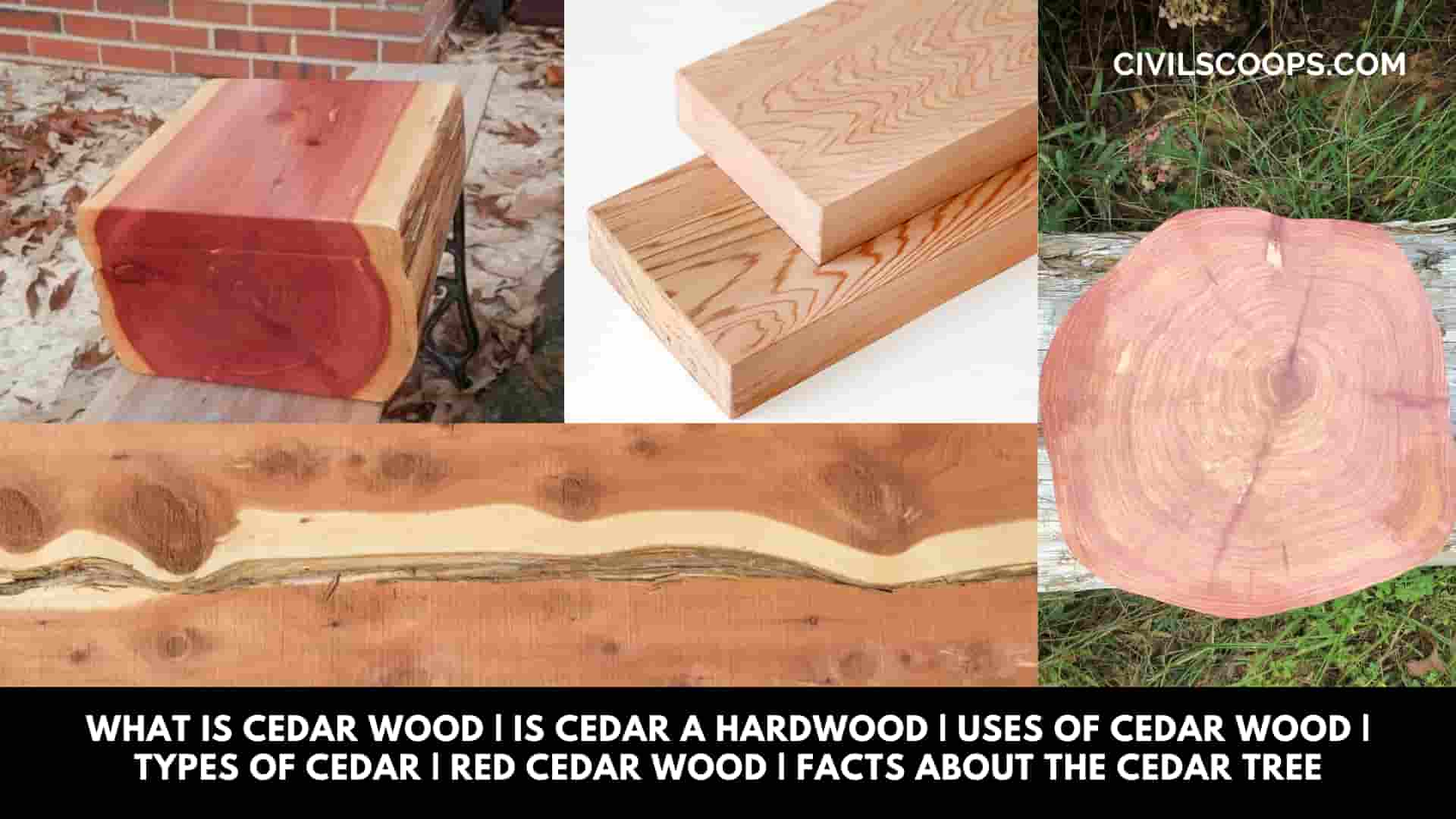
Table of Contents
What Is Cedar Wood?
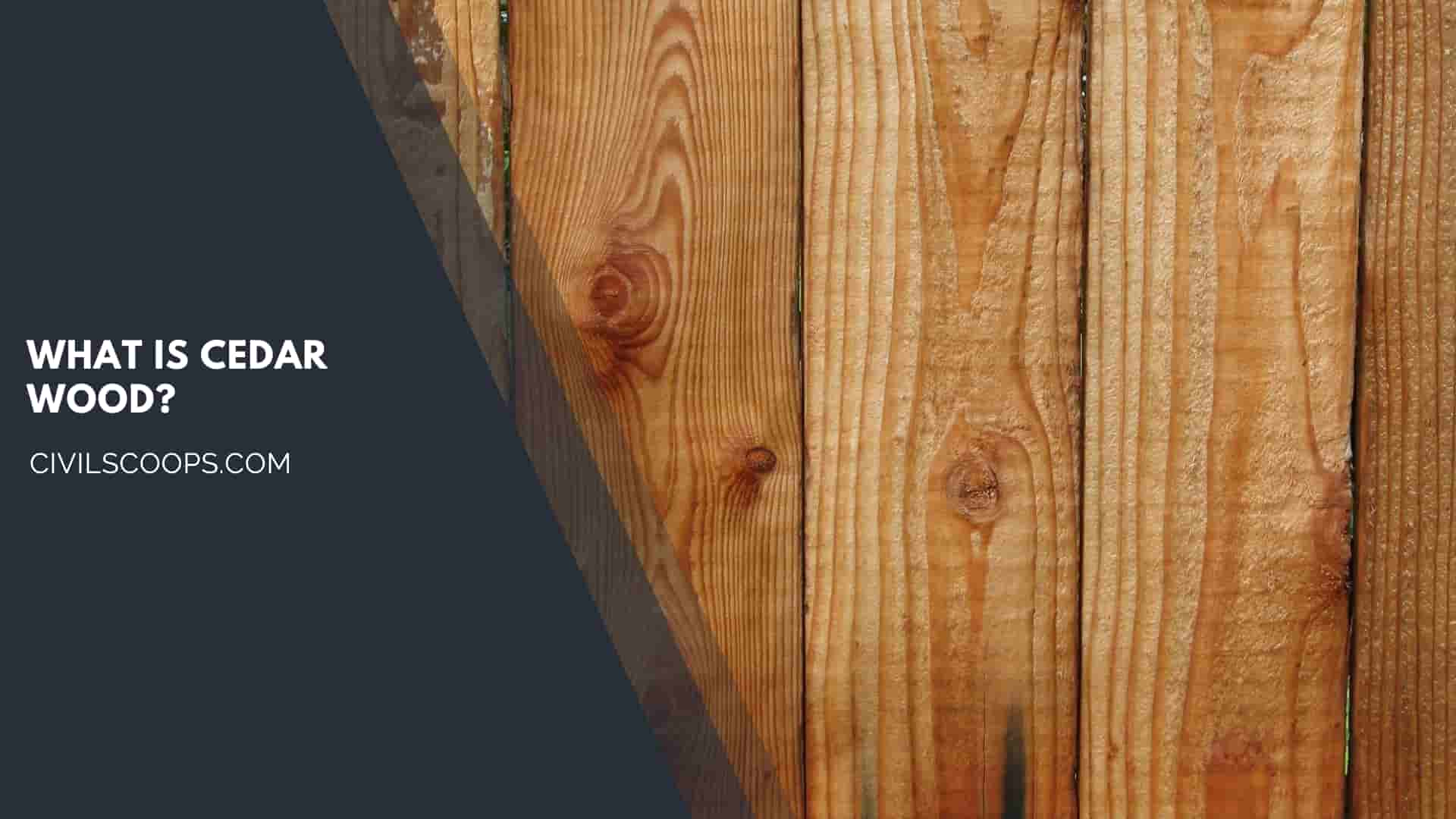
Cedar is a very durable wood. It lasts long for decades. Cedar woods have a natural resistance to deterioration. The natural preservatives present in it makes it durable than other wood types. The cedar wood can even last long in a place with a very harsh climate.
The open cell structure in cedarwood makes it less dense than most other softwoods. The less-dense structure of this softwood makes it easier to move from place to place.
Western red cedar wood is even grain and relatively consistent density. It’s less likely to swell, warp, cup, and twist than other soft & hardwoods. It also retains a distinguished appearance that lends a mark of quality to any house.
Because the western red cedar wood has low density and consistency, these woods are ideal wood to cut, saw, nail, and glue.
This wood type is free of the pitch and resin found in all other softwoods. It’s because of this, and the western red cedar is better for the wide range of finishes.
Cedar can accept and maintain a wide range of finishes- from lightly toned clear solutions to two-coat solid colours. It has a great range of finishes.
Its low density increases the insulation of the home by transporting less heat through the interior wall. For the same, it also keeps the house warm in winter.
The low density of western red cedar makes it better for acoustical applications than all other products used for the same. It’s favourite for interior panelling or exterior siding.
It has excellent dimensional stability. It also has low wood density and low shrinkage factor.
It’s also known for its high decay resistance. The natural durability of western red cedar is due to the presence of extractives in it.
Because of its low density and coarse texture, it has good thermal and insulating properties. It’s considered the best insulator among other most common available softwood types and is far superior to brick, concrete, and steel.
It has a great ability to dampen vibrations. It comes in the use of making acoustical structures, mostly because of its property, making it perfect for panelling and moulding for the place where it’s needed to reduce or confine noise.
It also has a low flame-spread rating, and it will perform better than most dense softwoods that have flame-spread ratings around.
Cedar has excellent finishing properties due to the lack of pitch or resinous extractives that are soluble in paint vehicles. Cedar takes a variety of coatings, paints, and stains exceptionally well.
Also Read: Difference Between Timber And Wood | What is Wood | What is Timber
Is Cedar a Softwood or Hardwood?
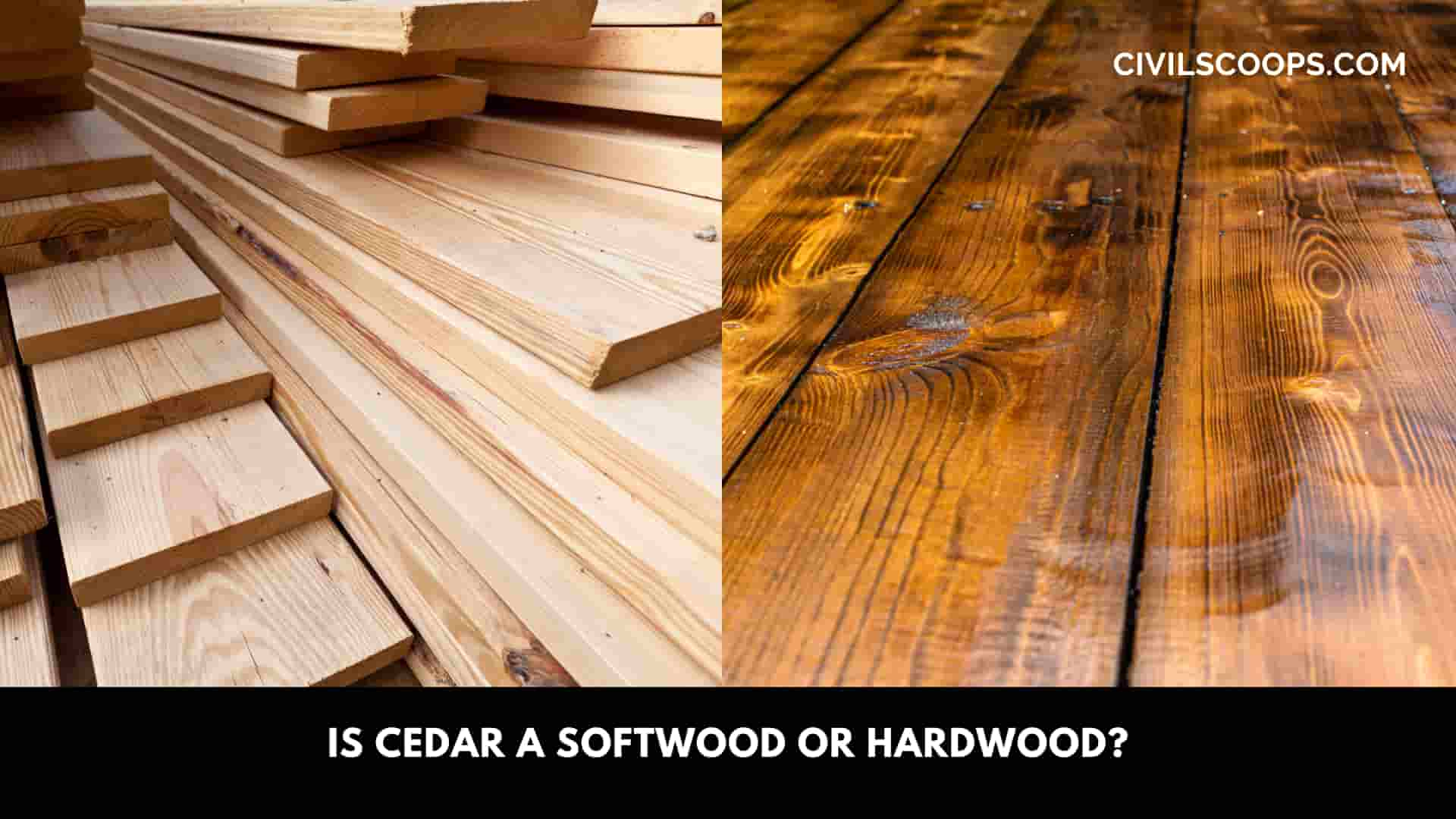
Cedar is a type of tree that belongs to the genus of coniferous trees. It belongs to the plant family Pinaceae. The subfamily which it comes under is Subfamily Abietoideae.
This wood type is native to the mountains of the Western Himalayas in India and the Mediterranean region. It usually ranges from 30m to 40m long. Sometimes, You may see it 60m high.
Cedar is recognized as spicy-resinous, scented wood, thick-ridged or square-cracked bark, and broad, level branches.
Shoots of this tree are dimorphic, long shoots, which form the framework of branches, and short shoots, which carry most of the leaves.
This plant’s leaves are evergreen and needle-like 8-60 m long, arranged in an open spiral phyllotaxis on long shoots and in dense spiral clusters of 15-45 together on short shoots.
The colour ranges from bright frass free to dark-green to glaucous pale blue-green, mostly depending on the white wax layer’s thickness, which protects the leaves from desiccation.
Seed cones are barrel-shaped, 6 to 12 cm long and 3 to 8 cm broad, green maturing grey-brown, and as in Abies, the seeds have two or three resin blisters having an unpleasant-tasting resin thought to be a defence against squirrel’s predation.
It takes one year for the cone to completely mature. The pollination happens in autumn, and the seeds mature at the same time a year later.
The pollen cones are slender, ovoid, 3 to 8 cm long, produced later in summer and shedding pollen in autumn.
Cedars are generally cultivated in places where the temperature usually doesn’t go below –25 degrees Celsius.
Uses of Cedar Wood

- Cedarwood soil is natural moth repellent. For this reason, it comes in the use of creating modern furniture like closets that contain wooden clothes.
- The cedars of North America are light-weight, durable, and highly stable. It’s used as wood shingles, which are tapered pieces of wood that clad roofs and walls to protect them from harsh weather.
- Since the cedar is much resistant to cracking and warping, it’s very suitable to make the musical instruments.
- Two special instruments are made from this wood Spanish classical guitars and occasionally steel-string guitars.
- The property of being resistant to warping makes it suitable for interior panelling in rooms around the house.
Types of Cedar
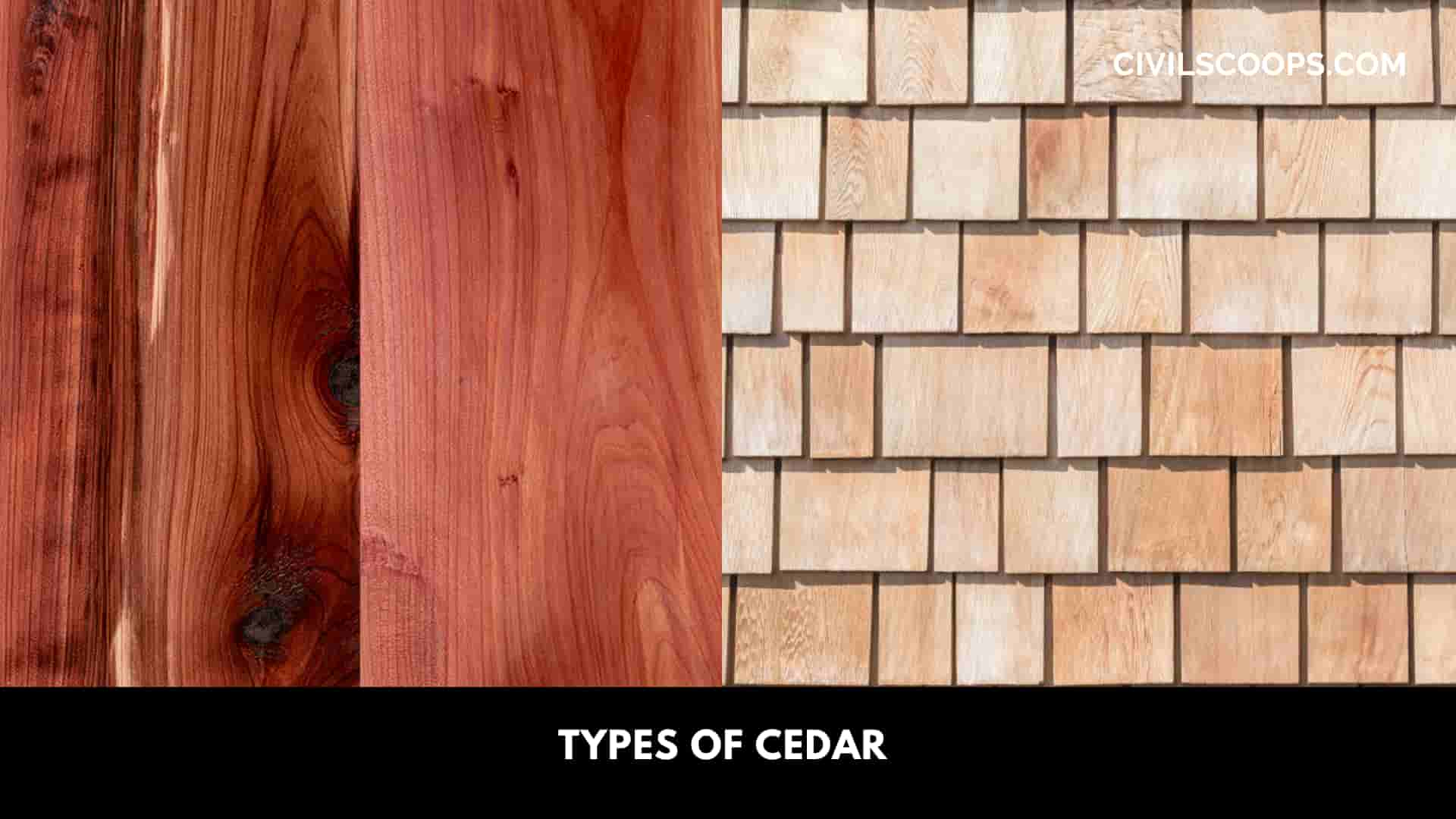
Some major types of cedar are
- Deodar Cedar
- Eastern Red Cedar
- Western Red Cedar
- Atlas Cedar
- Cyprian Cedar
- Northern White Cedar
- Alaska Cedar
- Spanish Cedar
- Lebanon Cedar
- Eastern White Cedar
1. Deodar Cedar
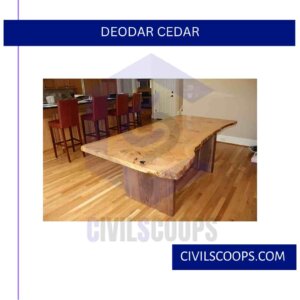
The Deodar cedar (Cedrus deodara) is an evergreen conifer tree that is favoured for its weeping habit (gracefully drooping branches). It is often used as a specimen tree in parks and other large gardens and can also be used to line streets.
This species is the national tree in Pakistan, and it has garnered the Award of Garden Merit from the Royal Horticultural Society.
Each needle on this conifer is 1 to 2 inches long and can be bluish-green or greyish-green depending on the cultivar. They are produced in whorls of 20 to 30 needles. They also appear individually on long shoots.
Also Read: How to Remove Stains from Wood?
2. Eastern Red Cedar
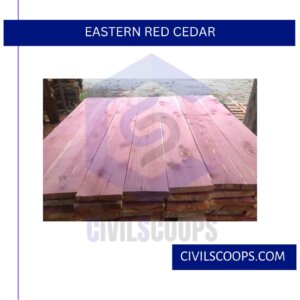
Eastern redcedars are dioecious, which means that male and female trees are separate plants. It’s easy to tell the difference between the two. While both bloom in late winter, female eastern redcedars produce green flowers and the males produce yellow flowers.
The female trees bear small (quarter-inch), fleshy, berry-like cones that appear in spring and mature in the fall. The “berries” are generally blue with a whitish bloom, giving them a gray-blue appearance, and contain 1 to 4 seeds each. The male trees bear brown, pollen-bearing cones on the branch tips. Their pollen is dispersed by the wind.
3. Western Red Cedar
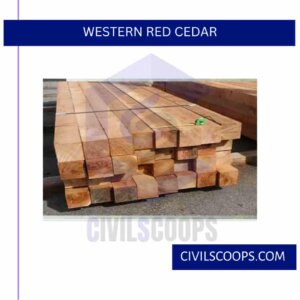
Western red cedar grows at low to mid-elevations along the coast and in the wet belt of the interior of British Columbia (B.C.), Canada, where the climate is cool, mild and moist.
It is a large tree, up to 60 metres tall when mature and 2.5 metres in diameter. It is often found along side Douglas fir, Sitka Spruce, Black Cottonwood and Red Alder, as it is rarely found in pure stands.
Western red cedar makes up approximately 8% of B.C.’s total growing stock and is one of the country’s most commercially valuable species. Due to its unique properties, western red cedar products have been developed for a variety of applications.
4. Atlas Cedar
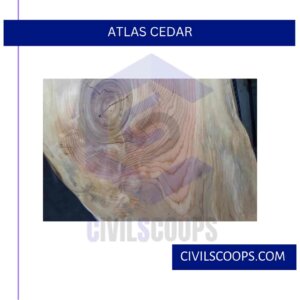
A distinctive evergreen, the Atlas cedar makes a beautiful specimen tree. It’s silvery blue to bluish-green needles are eye-catching in any landscape, and it develops an attractive, rugged form when given the space to grow freely.
Because the aromatic oil the tree produces is a natural deterrent for insects, wood from this cedar is commonly used in chests and furniture drawers.
5. Cyprian Cedar-
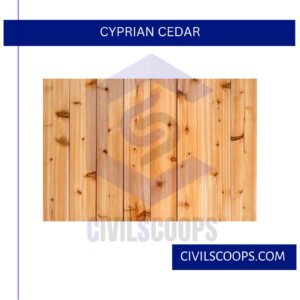
As you would expect from the name, this cedar tree is native to Cyprus, in particular, the mountain ranges of Paphos, Tripylos, and Troodos (American Conifer Society).
The fact that it is only native to a relatively small region makes it quite a rare species, and it is certainly the least commonly found tree among the true cedars.
In its native habitat, it will reach heights of up to 80 feet, but as an ornamental tree is more likely to have a maximum height of 50 feet.
It is tolerant of a variety of soil types, so long as they are well-draining. This cedar tree likes to be watered occasionally, though it can tolerate short periods of dry soil.
6. Northern White Cedar
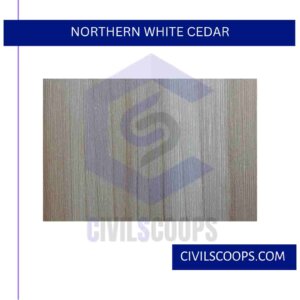
This tree forms a narrow pyramid shape, with dense branches that cover the trunk and an abundance of glossy green foliage.
The needle-like foliage is highly fragrant, with an earthy woody scent. The tree grows slowly and is tolerant of a variety of soil types, though it prefers moist, well-draining soil. It is native to North America but has been introduced to many other areas, including Europe.
7. Alaska Cedar

Alaska cedar in an interesting medium-sized evergreen tree with gray-green to blue-green foliage that droops from widely spaced branches. Native to moist bottomlands in the Pacific Northwest, it needs consistently moist soil. This plant is also known as false cypress.
8. Spanish Cedar
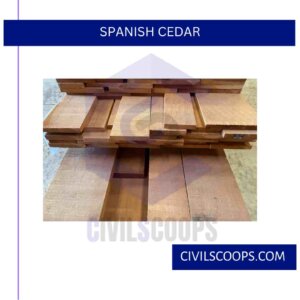
Spanish cedar is deemed to be vulnerable to extinction. The forests where it grows are under siege by organized crime. Even supporting these forests, whether for Spanish cedar or any other exotic woods, is highly discouraged.
Even its importation process results in a higher carbon footprint, and hence the commercial use isn’t much appreciated.
9. Lebanon Cedar
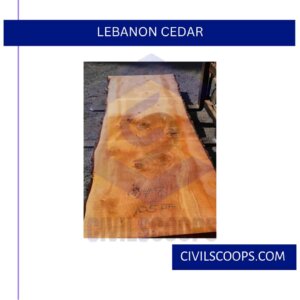
This cedar tree is native to the mountainous regions of Eastern Mediterranean, including Lebanon, where the tree is the country’s national emblem.
In its native home, the tree can reach up to 130 feet tall, but when planted in cultivation, it typically stands at heights of between 40 and 80 feet, with a spread of 30 to 70 feet.
As the cedar tree that is most tolerant of cold temperatures, this tree is popular in climates that experience cold winters.
It is a very slow-growing tree that can take many years to reach its ultimate height. As it grows, it takes on a pyramid shape, though as it gets more mature, the uppermost branches will stem out to create an open flat top.
10. Eastern White Cedar
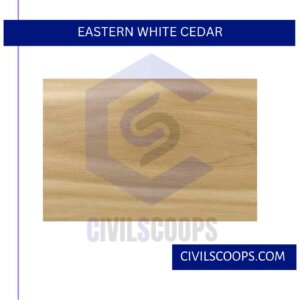
The eastern white-cedar is also called northern white cedar, arborvitae and swamp-cedar. The name arborvitae or “tree of life” dates from the 16th century when the French explorer Jacques Cartier learned from the Indians how to use the tree’s foliage to treat scurvy.
Also Read: Types of Wood
Red Cedar Wood
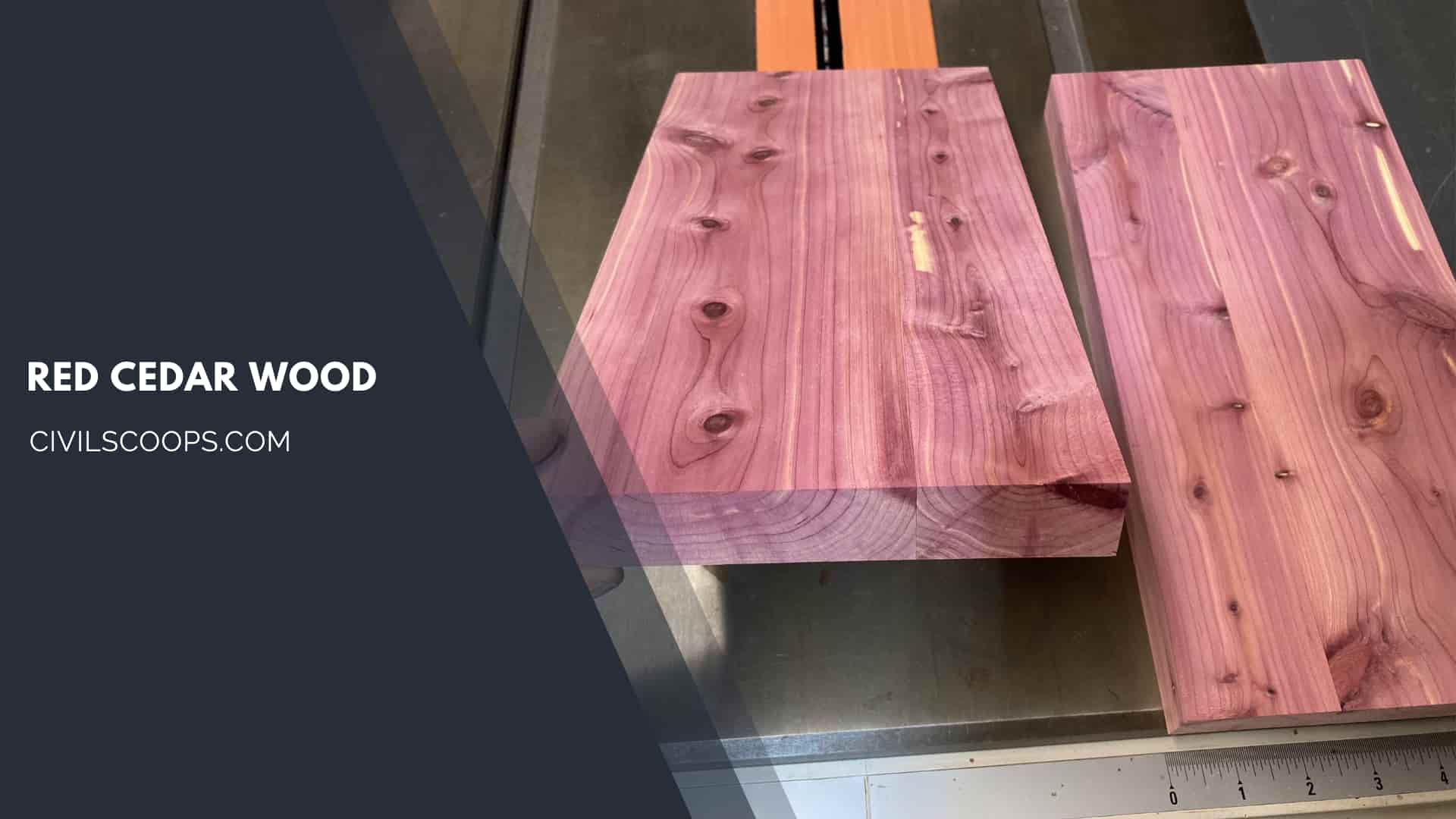
Western Red Cedar is one of the most versatile cedar, and it’s still prevalent because of its properties.
Some of these are.
- Durability.
- Light in Weight.
- Uniformly Textured, Straight-Grained and Containing No Resin.
- Easy to Work with.
- Ability to Accept Stains.
- It’s Warm in Winter and Cold in Summer.
- Block Noise.
- Dimensional Stability.
- Resistance to Decay.
- Thermal & Insulating Properties.
- Flame Spreading Rate.
- Finishing & Workability.
Cedar Wood Facts
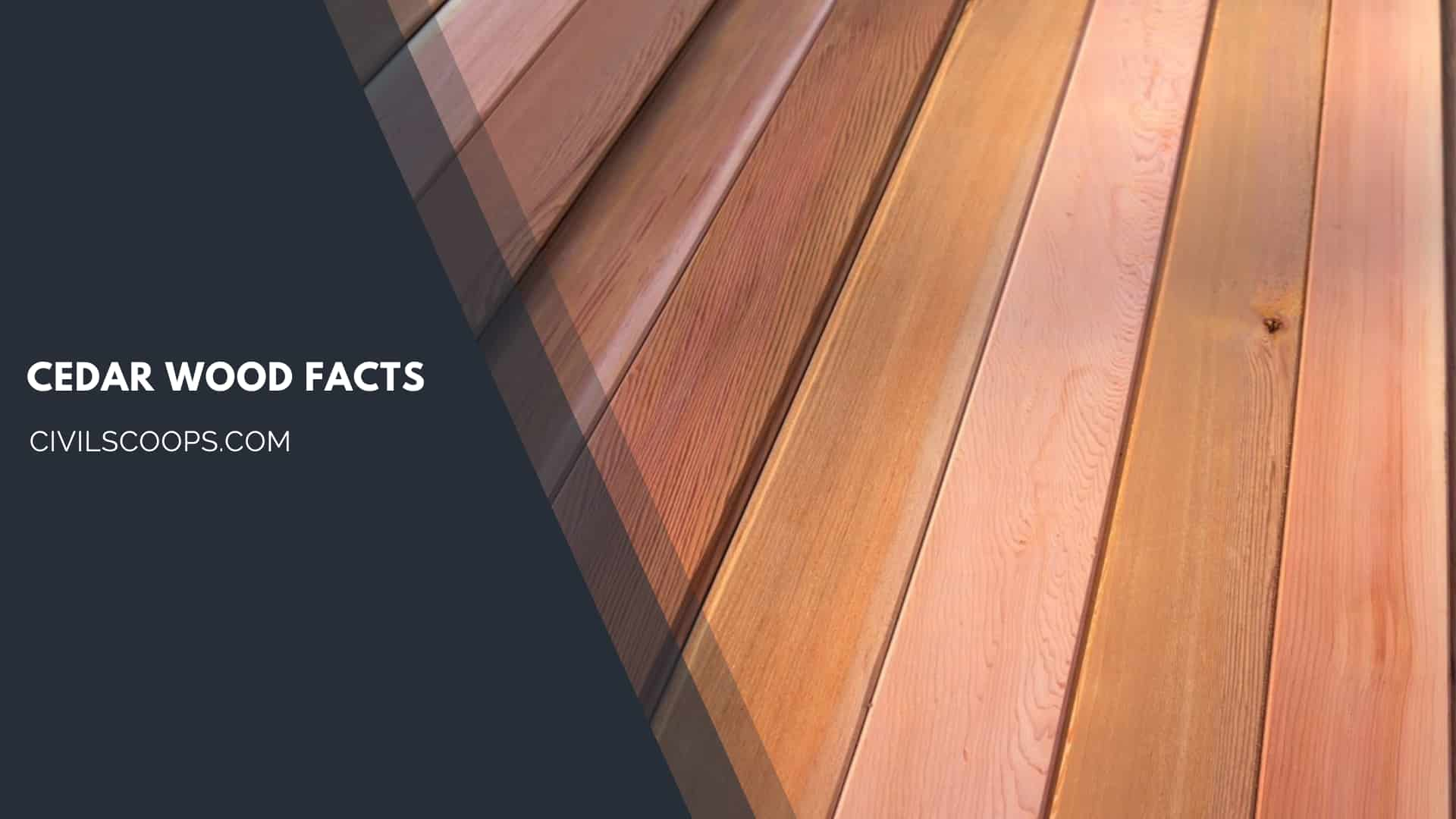
- Cedar is an evergreen tree that belongs to the family of pines.
- Sometimes, it’s also be used to describe 30 species of plants that belong to three families – Pinaceae, Cupressaceae, and Meliaceae.
- Cedar can reach from 98 to 131 feet in height & 8 feet in diameter.
- Cedar trees are huge, which is why we don’t see it in the streets and park.
- The cedar trees are often used at the large piece properties as a hedge or for their usefulness against winter.
- They make an excellent windbreak.
- The Cedar tree has dark-grey or brown bark. It can be seen that surface of the cedar’s bark is covered with square-shaped cracks or with thick ridges.
- The thick layer of white wax present on cedar leaves prevents the loss of water. Also, the colour of leaves depends on the thickness of the wax.
- Cedar is a monoecious tree, i.e., it reproduces male and female cones on the same tree.
- Immature female cones are barrel and green coloured. Female cones are ready to release winged seeds after 12 months of pollination.
- According to the legend, Lebanon cedar trees were used to construct ships for Alexander the great and the construction of temples for the king Solomon in Jerusalem.
- Cedarwood oil, extracted from foliage, woods, and roots of the cedar tree, was one of the ingredients used to manufacture of perfumes in ancient times.
- The cedar tree was used to manufacture things like boxes, bowls, tools, boats, and various weapons in the past.
Ancient Sumerians used cedarwood oil as a base for paints. - The word ‘cedar’ was used 103 times in the Bible.
- Ancient Egyptians used Fragrant oil extracted from the heartwood of cedar for mummification in ancient Egypt. Native Americans used this oil to repel mosquitoes.
- The property of cedar being insect-repelling makes it best for the manufacturing industry. Clothes made of cedar are moths free. The Wood of cedar is also used for making shoe trees because it absorbs moisture and prevents the bad smell.
- Lebanon cedar is seen as a symbol of tolerance and immortality in Lebanon. You can see it at a central position in the flag of the country of Lebanon.
- Cedar can survive even up to 300 years in the wild.
- The Cedars of GOD in Lebanon is a UNESCO World Heritage Site along with Holy Valley, Byblos, Baalbek, Anjar, and Tyre.
- In western red cedar, both self and cross-pollination occur.
- The western red cedar is also capable of vegetative reproduction. Fallen branches sometimes develop roots also.
- Conifers belong to a major group of plants known as gymnosperms. The term ‘gymnosperm’ comes from the Greek root word meaning seed. This term tells the fact that the gymnosperm seeds are not surrounded by fruits.
- The cedar ‘Thuja Plicata’ contains three interesting chemicals. The Wood contains plicatic acid, which could invoke asthma and allergies in sensitive people. This can be a major problem for people who work with the wood and is common enough to be considered an occupational hazard.
- Plicatic acid can also become a reason for infecting contact dermatitis, which causes inflammation in the skin after touching any harmful substance. It generally causes redness and itching.
- The plant contains a chemical. We call it ‘Thujone’. When we rub the leaves of the plant, this chemical causes a smell like a menthol.
- This chemical is also used to make perfumes, in minimal quantity though, as it can induce bad effects on the nervous system, if taken in quantity more than the safe limit.
- The wood contains a chemical thujaplicin, which acts as a fungicide and a bactericide. This is one of the reasons behind the wood’s resistance against decay.
- There is a very lovely legend about the western red cedar among Salish people. Once there was a man who donated all his belongings and wealth. When he died, God created a western red cedar on his grave so that people could get what they wanted on that site.
- The flat and spreading leaves of the tree can also provide protection from the rain.
- The cedar tree comes in good use of wild animals. Bears, skunks, and raccoons make their dens in the tree’s trunk’s cavities, while many birds also build their nests on this tree.
- Phoenicians used to export cedar trees to Egypt and got a huge price in return, even before they reached the peak of their trading capabilities.
- The capital they gained from selling tinder helped them hugely in making their historic international trading network. Even they made their famous ships from the cedarwood.
- Lebanon cedar helps ease toothaches.
- The Quinault Lake in Washington is known for having the largest known western red cedar in the world.
- Eastern red cedar may be considered an invasive weed in some parts of its growing area. Its fast reproduction rate often takes over the native prairie plants, becoming the sole plant in the area.
Cedar Wood
Cedarwood is the wood from cedar trees, known for its pleasant aroma, durability, and insect-repellent properties. It’s used in construction, furniture-making, aromatherapy, and insect-repelling products like closet liners.
Western Red Cedar
Western Red Cedar is a type of wood from the Pacific Northwest known for its reddish-brown color, durability, and use in construction for siding, decking, and outdoor structures.
What Is Cedar Wood?
Cedar wood is a versatile and durable domestic hardwood that grows on both the East and West coasts of the US. Although there are many different types of cedar trees, the ones most commonly used for their lumber are Eastern and Western Red Cedar.
What Is Cedar Wood Used For?
It is valued for its distinct appearance, aroma, and its high natural resistance to decay, being extensively used for outdoor construction in the form of posts, decking and shingles. It is also widely used throughout Europe and America for making beehives.
What Does Cedar Wood Look Like?
Most types of cedar wood are a pinkish-red color, though it can have some purple tones as well. As it ages it loses its reddish hues and becomes a silver or gray color.
Eastern Red Cedar
eastern red cedar, also called pencil cedar, (Juniperus virginiana), an evergreen ornamental and timber tree of the cypress family (Cupressaceae), native to poor or limestone soils of eastern North America.
What Is Cedar Wood Good For?
Cedar wood tends to be used for its natural beauty, which means it isn’t typically hidden in the framing of a construction project. With this visual appeal, cedar lends itself to be used in many applications like fencing, decking, siding, and trim.
Red Cedar Wood
Eastern and Western red cedar are gymnosperm trees, so most cedar wood is considered softwood. Spanish and yellow cedar, however, are hardwoods. With that said, Eastern red cedar, although considered a softwood, has a significantly higher janka rating than the other varities and is thus stronger and more durable.
Types of Cedar Wood
- Western Red Cedar: Reddish-brown, durable, used in construction.
- Eastern Red Cedar: Aromatic, insect-repellent, used for closets.
- Cedar of Lebanon: Fragrant, historical construction use.
- Atlas Cedar: Fragrant, used in perfumery and aromatherapy.
Northern White Cedar
Northern white-cedar (Thuja occidentalis) is also called eastern white-cedar, arborvitae, and swamp-cedar. The name arborvitae or “tree of life” dates from the 16th century when the French explorer Cartier learned from the Indians how to use the tree’s foliage to treat scurvy.
Uses of Cedar Wood
It is naturally rot and insect resistant, so it is frequently used for outdoor applications, such as outdoor furniture, decking, and siding. However, cedar is also frequently used to create indoor furniture like chests and tables, as it has a unique reddish hue and gives off a welcomed scent.
Is Cedar a Hardwood?
No, cedar is not a hardwood. This iconic wood, known throughout the world for its beauty, versatility and spicy aroma, is a softwood. It belongs to a group of plants known as “gymnosperms,” which includes most conifers, such as pine and fir trees.
Is Pine Hard or Soft Wood?
softwood
Soft and Hardwood. The primary difference when discussing oak vs pine is that oak is a hardwood while pine is a softwood. Softwood isn’t actually soft. To the average person, pine will feel just as hard as oak!Bahman
Is Cedar a Hardwood or Softwood?
Cedar is generally classified as a softwood. Despite its durability and some species having relatively dense wood, cedar trees are part of the coniferous group of trees, which are known as softwoods. Softwoods have needles instead of leaves and typically reproduce using cones. While the distinction between hardwoods and softwoods is based on botanical characteristics rather than the actual hardness of the wood, cedar is considered a softwood due to its tree classification.
Is Cedar a Softwood?
No, cedar is not a hardwood. This iconic wood, known throughout the world for its beauty, versatility and spicy aroma, is a softwood. It belongs to a group of plants known as “gymnosperms,” which includes most conifers, such as pine and fir trees. The common term for all gymnosperms is softwoods.
Is Red Cedar a Hardwood?
No, Red Cedar is not a hardwood. It’s a softwood. The term “Red Cedar” can refer to different types of trees, but the most common reference is to Eastern Red Cedar (Juniperus virginiana), which is a softwood tree. Despite its name, the classification of hardwood or softwood is based on the type of tree, not the color of the wood.
Is Cedar Wood Strong?
Cedar is generally a strong wood. Aromatic Red Cedar has a compressive strength of 6,000 and a hardness of 900. Compare that to Chestnut wood (which is a Hardwood) has a compressive strength of 5,300 and a hardness of 540. Walnut has a compressive strength of 7,500 and a hardness of 1,010.
Cedar Wood Uses
Cedar wood is used for construction, furniture, aromatherapy, perfumes, insect repellent, crafts, and more, thanks to its durability, fragrance, and insect-repelling properties.
Cedar Wood Properties
The wonderful properties of Cedar
- Durability. As one of North America’s most durable woods, it lasts for decades and even centuries.
- Light in weight.
- Uniformly textured, straight-grained and containing no resin.
- Easy to work with.
- Ability to accept stains.
- It’s warm – or cool.
Hardwood Vs Softwood
In general, hardwood comes from deciduous trees which lose their leaves annually. Softwood comes from conifers, which usually remain evergreen. The trees from which hardwood is obtained tend to be slower growing, meaning the wood is usually denser.
Like this post? Share it with your friends!
Suggested Read –
- What Is Louvered Door? | 10 Different Types of Louvered Doors Available in Market
- 15 Types of Porch Used for Home | What Is Porch | How to Infer What Porch You Need
- What Is Skillion Roof | Types of Skillion Roof | Uses of Skillion Roof | How to Build a Skillion Roof
- What Is Gypsum Boards? | Properties of Gypsum Board | Types of Gypsum Board | Advantages & Disadvantages of Gypsum Board
- What Is an Ice Dam | How to Remove Ice Dam From Roof | What Causes Ice Dams on Roof | How to Remove Ice Dams